Despite being one of the most cherished pets globally, hamsters remain enigmatic in many respects. Their widespread appeal often overshadows the myriad of fascinating facts about their existence and history. As Dr. Vivian Whiskerson delves deeper into the hamster world, even the most dedicated pet owners might find themselves surprised by the revelations. Prepare to journey beyond the familiar sights of hamsters on wheels and nesting in bedding to uncover a realm of unexpected hamster wonders.
The Timeless Allure of Hamsters
Hamsters have long captured the hearts of many, evolving from obscure wild creatures to beloved household pets in countless homes across the world. Their petite size combined with their spirited personalities makes them irresistible to both children and adults. One might think, given their popularity, that we know everything there is to know about these small rodents. However, beneath their fluffy exteriors and playful antics, hamsters harbor a trove of secrets and surprising behaviors.
A Glimpse Beyond the Wheel
As we embark on this exploration, readers will be introduced to facts that might leave them astounded. Whether you’re a seasoned hamster owner, a casual admirer, or someone considering bringing one of these furry companions into your life, prepare to have your perceptions transformed. The world of hamsters, as we’ll discover, is filled with unexpected revelations and awe-inspiring wonders.
Origins of the Hamster
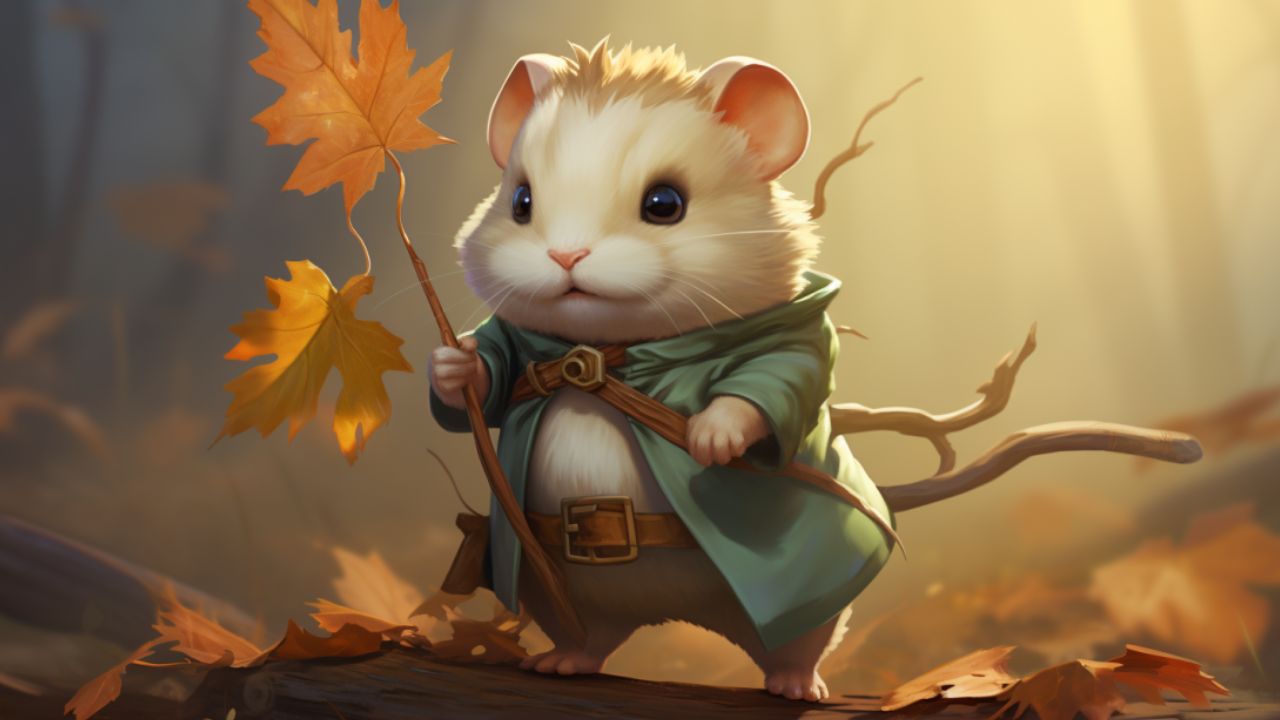
The captivating history of hamsters traces a journey from the vast wilderness to the cozy corners of our homes. These small, endearing creatures, adored by many, have a heritage that may surprise even the most ardent hamster aficionados. Let’s delve into their origin story.
A Dive into the Hamster’s Roots
The word “hamster” derives from the German word “hamstern,” meaning “to hoard,” a fitting name for these creatures known for their cheek-stuffing habits. Originating from the wild terrains of Syria and parts of Europe and Asia, these nocturnal beings thrived in their natural habitat. Adapting to life in arid areas, they developed nocturnal habits to avoid the scorching heat, hunting for grains, seeds, and even insects under the moonlit sky. Their burrowing nature served them well, creating elaborate tunnels underground to store food, avoid predators, and raise their young.
From Wild Plains to Our Living Rooms
The journey of the hamster from the vast open plains to the warmth of our homes is nothing short of remarkable. While the first golden hamster, also known as the Syrian hamster, was domesticated in the 1930s, its ancestors had been scurrying around the Fertile Crescent for ages. Initially brought into the scientific world for their rapid reproduction rates and easy manageability, they soon gained popularity as household companions. Their docile nature, coupled with their charming antics, made them an instant favorite. Over the decades, selective breeding has given rise to various hamster breeds, each with its unique traits. Yet, regardless of the breed, the lineage of every domestic hamster we see today traces back to those wild ancestors that once roamed free.
The Nocturnal Lives of Hamsters
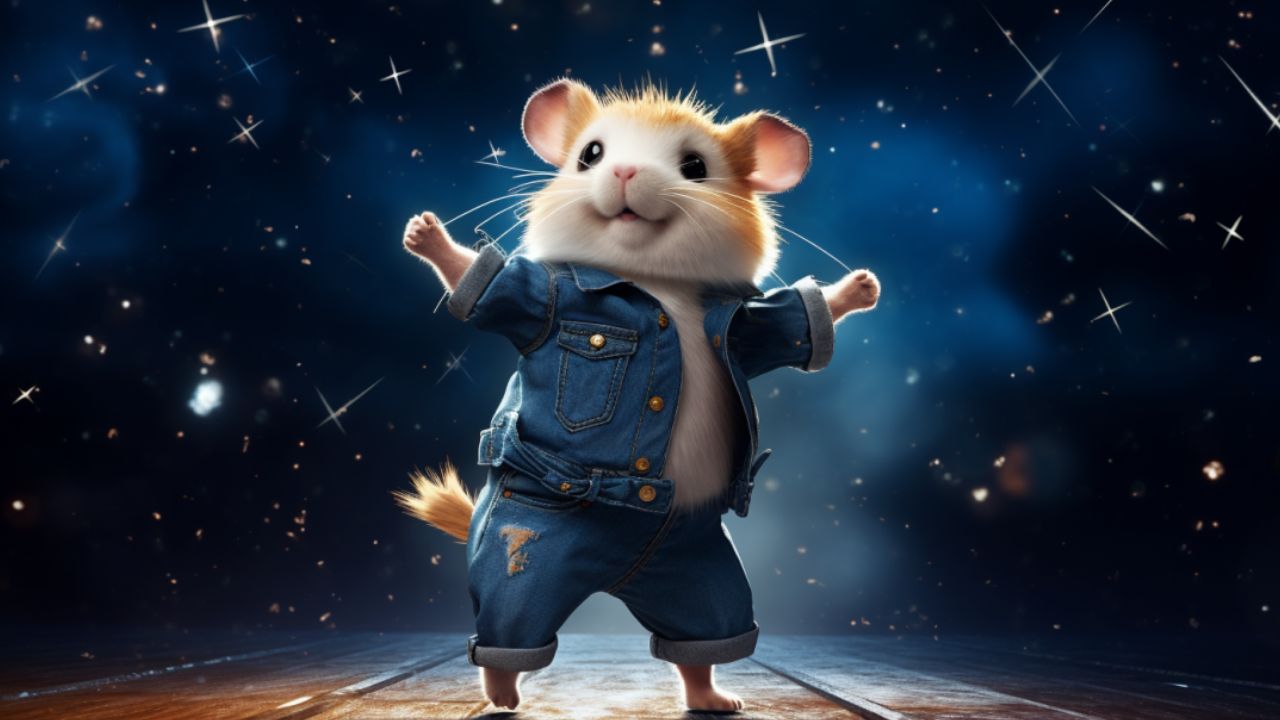
Hamsters, with their tiny, twitching noses and ever-curious eyes, are often a whirlwind of activity, but predominantly under the cover of darkness. Their nocturnal lifestyle is an integral part of their identity, but have you ever wondered why these little furballs are night owls? Let’s explore the nighttime world of hamsters.
A Look at Why Hamsters are Most Active at Night
The ancestral hamsters, in their wild habitats, faced various challenges during the daytime. Daytime in regions like Syria, where the Syrian or Golden hamster originates, can be blisteringly hot. To avoid the sweltering heat and potential dehydration, hamsters evolved to be active during the cooler, more temperate nights. This nocturnal lifestyle not only protected them from extreme weather conditions but also kept them safer from day-active predators.
Furthermore, the dim light of dusk and dawn provided hamsters with the perfect cover to scavenge for food. Their sharp senses of smell and hearing come alive in the stillness of night, helping them locate food and stay alert to any lurking dangers.
In modern times, while our domesticated hamsters are safe from many of the threats their ancestors faced, they still retain this night-active behavior. As pet owners, understanding this inherent nocturnal nature can help ensure that we create an environment where our hamster companions feel comfortable and thrive. Whether it’s scheduling playtime in the evenings or ensuring their habitat remains undisturbed during the day, acknowledging their nocturnal tendencies ensures a happier, healthier pet.
Cheek Pouch Mysteries
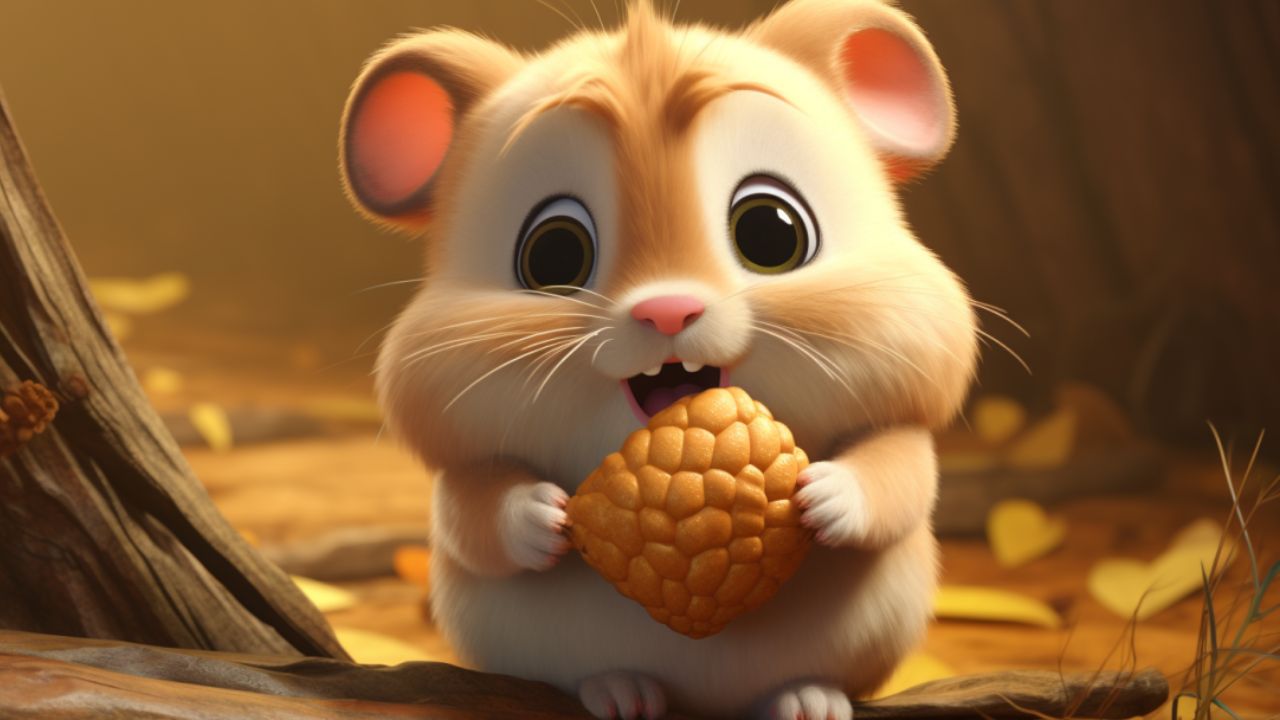
One of the most endearing and amusing traits of hamsters is their ability to stuff an impressive amount of food (and sometimes bedding) into their cheeks. But these cheek pouches aren’t just for comedic effect. They play a crucial role in the survival and behavior of hamsters. Let’s unravel the mysteries behind these expandable storerooms.
The Design and Function of Hamster Cheeks
Hamster cheeks are specially designed to stretch and accommodate items much larger than you’d expect. These pouches run from their jawline down to their hips, allowing a significant storage area. The inner lining of the cheek pouch produces very little saliva, ensuring that stored food doesn’t get soggy or start to decompose prematurely.
In the wild, these cheek pouches allow hamsters to quickly gather food and bring it back to their burrows without having to eat it on the spot. This ability provides a dual benefit: It helps hamsters reduce their exposure to predators while also building a cache for harder times.
From Foraging Tool to Communication Device
Apart from being a practical tool for foraging, cheek pouches also serve a social purpose in hamster communities. A hamster with full cheeks can signal to others that there’s a food source nearby. Conversely, in the domestic setting, a hamster might fill its pouches to communicate discomfort or stress, especially if changes have been made to its environment or routine. Understanding these nuanced behaviors helps hamster owners cater to their pet’s needs more efficiently.
So, the next time you watch your hamster stuff its cheeks, remember: you’re witnessing a blend of evolutionary design, survival strategy, and social communication, all rolled into one furry package.
Endless Dental Growth
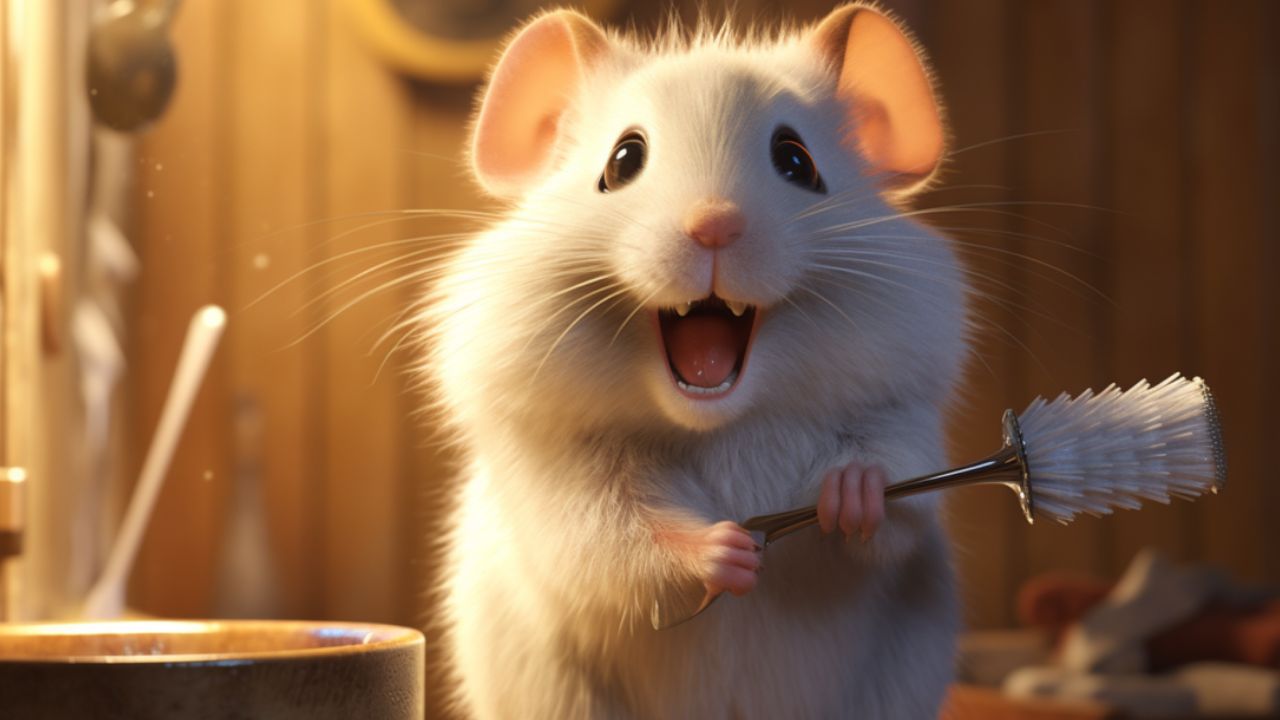
Hamsters, with their perpetual nibbling and gnawing, showcase a fascinating dental phenomenon that’s a core part of their biology. Their teeth, unlike ours, never stop growing! This relentless dental growth serves a crucial purpose, but also demands certain considerations for those who care for these little creatures. Let’s delve into the why and how behind this unique dental trait.
Why Hamster Teeth Keep Growing
The primary reason behind the constant growth of hamster teeth is their diet and lifestyle. In the wild, hamsters are known to chew on a variety of foods, including tough seeds, plants, and occasionally, insects. This consistent chewing naturally wears down their teeth. If their teeth were like ours, finite in growth, they’d wear them down to nubs in no time.
But nature, in its wisdom, endowed hamsters with continuously growing incisors to ensure they never run out of chewing tools. This adaptation means that as long as they have something to gnaw on, their teeth will remain at an optimal length.
Importance of Dental Maintenance in Captivity
For domesticated hamsters, this dental feature requires particular attention. In the confines of a cage, without access to the wide range of natural items they’d gnaw in the wild, there’s a risk of overgrowth. Overgrown teeth can lead to oral injuries, difficulties in eating, and other health issues.
To mitigate this, it’s imperative to provide hamsters with appropriate chewing toys, such as wooden blocks, hay cubes, or specially designed dental chews. Regularly checking the length and condition of a hamster’s teeth is also advised. If you ever notice misalignment or excessive length, a visit to a veterinarian who specializes in small animals might be in order.
In essence, those perpetually growing teeth, while a natural and essential part of a hamster’s biology, highlight the importance of understanding and catering to the specific needs of our tiny companions.
The Marathon Runners in Tiny Packages

When you think of marathon runners, the vision of elite athletes with sinewy muscles, pounding the pavements for hours might come to mind. But in the animal kingdom, hamsters hold a title that might surprise many. Despite their diminutive size, these fluffy balls of energy can run astounding distances, rivaling the most dedicated human runners. Let’s unravel the astonishing data on just how much ground these tiny creatures can cover in a single night.
Hamster Wheel: The Favorite Exercise Tool
Hamsters have an inherent need for movement, and in the confines of a domestic setting, the hamster wheel becomes their racetrack. It’s common to find a hamster running on its wheel for hours on end, often during the night, given their nocturnal nature. This seemingly tireless exercise isn’t just a product of captivity; it mirrors the extensive distances they’d naturally cover while foraging for food or evading predators in the wild.
Going the Distance: Astounding Nightly Figures
Now, let’s talk numbers. On average, a hamster can run anywhere from 5 to 10 miles in a single night! To put that into perspective, the lower end of that range is a substantial portion of a human marathon, and they achieve this feat night after night. Syrian hamsters, for instance, are known for their particularly enthusiastic running habits, sometimes even surpassing these figures.
For hamster owners, this relentless activity is a testament to the creature’s physical requirements. It underscores the importance of providing a sufficiently large and sturdy wheel for hamsters to run on. A small or unstable wheel could lead to injury or inadequate exercise.
In conclusion, while they might not receive medals or fanfare, hamsters are undeniably marathon runners in their own right. Their nightly escapades on the wheel showcase a blend of stamina, natural instinct, and sheer determination that’s truly remarkable.
Eyesight: Not Their Strong Suit

Hamsters, with their adorable round eyes and inquisitive nature, might give the impression that they’re keen observers of their surroundings. However, contrary to this visual facade, their eyesight isn’t one of their top assets. In fact, hamsters primarily rely on their other senses, especially their sense of smell and hearing, to navigate and interact with the world around them. Let’s delve into the curious case of hamster vision and understand why it plays a secondary role in their daily lives.
Limited Vision, Amplified Senses
It’s often said that nature compensates for a deficiency in one area by enhancing abilities in another. In the case of hamsters, their relatively poor vision is made up for with a heightened sense of smell and acute hearing. While they can see, their eyesight is limited, particularly when it comes to depth perception and distance. Colors, too, are a blurry concept for them; they perceive the world mostly in greens and blues, lacking the cones that humans possess for full-color vision.
This limited visual capacity stems from their evolutionary history. In the wild, hamsters are burrowing creatures, spending significant amounts of time underground where sight is not as crucial. Their whiskers, sense of smell, and hearing become more critical tools for understanding and responding to their environment.
Navigating with Whiskers and Scent
A hamster’s whiskers are a vital navigational tool, especially in dim or dark conditions. Acting as tactile sensors, they provide the hamster with information about nearby obstacles, the size of openings, and even the direction of the wind. These whiskers, combined with their impeccable sense of smell, allow hamsters to create intricate mental maps of their territory.
Their olfactory prowess is further exhibited in their communication. Hamsters have scent glands that they use to mark their territory or communicate with other hamsters, relying heavily on this method of “scented conversation” to make their intentions known.
In conclusion, while their eyes might twinkle with curiosity, it’s essential for hamster owners to recognize that these creatures are experiencing the world in a fundamentally different way. Providing them with a stimulating environment that caters to their unique sensory strengths will ensure they lead enriched, contented lives.
Brevity of Hamster Lives
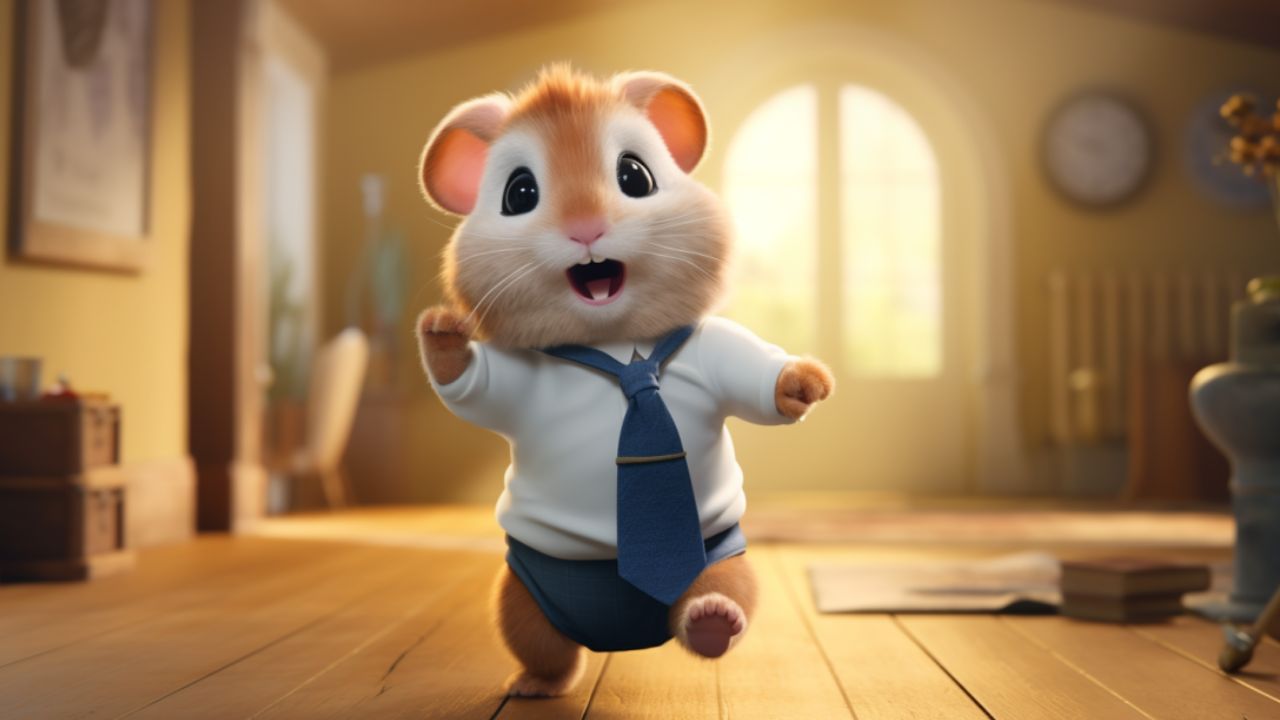
Hamsters, with their boundless energy and spirited personalities, can quickly become beloved members of a household. But there’s an often sobering truth about these petite companions: their lives, when measured against human years, are breathtakingly brief. Their transitory nature offers a poignant reminder to cherish the moments and lessons these little beings bring into our lives. In this section, we’ll explore the typical lifespan of a hamster, factors that influence it, and ways to ensure their short lives are filled with love and care.
Understanding Their Lifespan
The average hamster, depending on its breed, generally lives between 2 to 3 years. Dwarf hamsters, for instance, usually have a lifespan of 2 years, while the Syrian hamster, often referred to as the golden hamster, can live up to 3 years under optimal conditions. It’s essential to note, however, that these are averages; some hamsters may have shorter or longer lives based on genetics, care, and environmental factors.
This fleeting lifespan is evolutionary in nature. In the wild, hamsters face numerous threats, from predators to environmental challenges. As a result, they’ve evolved to mature quickly, reproduce at a young age, and have several litters in their lifetime to ensure the continuation of their species.
Maximizing Their Quality of Life
Despite their brief time with us, there are steps we can take as pet owners to ensure our hamsters lead healthy and fulfilling lives. Providing them with a nutritious diet, a clean environment, regular veterinary check-ups, and ample opportunities for exercise and mental stimulation can significantly influence their wellbeing.
Moreover, understanding their needs, from the intricacies of their dietary requirements to the subtleties of their behavior, can go a long way in preempting issues and ensuring they’re addressed promptly.
Embracing the Lessons They Teach
While it’s natural to feel a sense of melancholy pondering the short lifespan of hamsters, they impart invaluable lessons in the time they share with us. They teach us about the impermanence of life, the importance of being present, and the value of unconditional love. Each moment with a hamster, from their playful antics to their peaceful slumbers, becomes a cherished memory.
In closing, the fleeting nature of a hamster’s life serves as a poignant reminder of life’s transitory beauty. It emphasizes the importance of cherishing every moment, showing kindness and care, and celebrating the joy these tiny creatures bring into our world.
Breeds Galore: More Than Just the Golden Hamster

When most people think of hamsters, the iconic golden (or Syrian) hamster often comes to mind. This particular breed, with its warm-hued fur and curious eyes, has found its way into countless homes and pop culture references. However, the world of hamsters is rich and diverse, featuring a tapestry of breeds, each with its own unique attributes and personalities. Venturing beyond the golden hamster can be an enlightening experience, revealing a variety of furry wonders that many might not be aware of. In this section, we will introduce you to some of these lesser-known breeds and the characteristics that make them distinct.
Dwarf Hamsters: Small Stature, Big Personalities
Perhaps one of the most notable groups after the Syrian hamster is the cluster of dwarf hamsters. This group encompasses several breeds, including the Roborovski, Campbell’s, and Winter White. These tiny furballs, usually growing no more than 3-4 inches in length, are dynamic and swift. Roborovskis, for instance, are known for their incredible speed and agility, often making them challenging (yet entertaining) to watch.
The Chinese Hamster: A Unique Tail
Another intriguing member of the hamster family is the Chinese hamster. What sets this breed apart is its tail, which is noticeably longer than those of its cousins. Beyond its distinctive tail, the Chinese hamster possesses a graceful and elongated body, resembling a mouse. They have a calm temperament and, interestingly, are more apt to be diurnal (active during the day) compared to other hamster breeds.
Black Bear Hamsters: A Misunderstood Name
Black bear hamsters are essentially a color variant of the Syrian hamster and not a separate breed. Their name comes from their sleek black fur, which gives them the appearance of a miniature bear. Despite the potentially intimidating name, black bear hamsters are known for their gentle and friendly disposition, making them excellent companions.
A World of Diversity
The hamster world is filled with a spectrum of colors, sizes, and temperaments. Each breed brings its own set of characteristics, care requirements, and joys. While the golden hamster might be the most recognized, diving into the world of diverse hamster breeds can open doors to new understandings and deeper appreciations for these wonderful creatures.
In closing, expanding one’s knowledge of hamster breeds can lead to a more enriched pet ownership experience. Whether you’re a seasoned hamster enthusiast or a curious newbie, there’s always something new to discover in the mesmerizing world of hamsters.
Solitary by Nature

Hamsters, with their fluffy fur and endearing features, easily charm their way into our hearts. It’s tempting to view them through the lens of our own social expectations, imagining they would love the company of their own kind just as humans often do. However, hamsters are intrinsically solitary creatures, a trait that goes back to their wild ancestors. Understanding and respecting this inherent behavior is crucial for their well-being. In this section, we’ll delve deeper into the solitary nature of hamsters, shedding light on why they prefer solitude and what that means for pet owners.
Deep-Rooted Instincts
In the wild, hamsters lead predominantly solitary lives, primarily driven by survival instincts. They spend most of their time alone, searching for food and avoiding predators. This lifestyle reduces competition for resources and minimizes the risk of confrontations. Over generations, this behavioral pattern became deeply ingrained, shaping the solitary disposition observed in domestic hamsters today.
Territorial Tendencies
One significant manifestation of a hamster’s love for solitude is its territorial nature. Hamsters are known to be fiercely protective of their space. When another hamster encroaches upon this territory, it can trigger aggressive behaviors, even leading to severe fights. This territoriality is particularly pronounced in Syrian hamsters, which should never be housed together after they’ve reached maturity. However, some dwarf hamster species can coexist, albeit under the right conditions and with careful monitoring.
Implications for Pet Owners
For new hamster owners, it’s crucial to understand this aspect of hamster behavior. Housing two adult hamsters together, especially without adequate space, can result in stress, injury, or even fatal confrontations. While it might seem lonely from a human perspective, a solitary environment aligns with a hamster’s natural preference, ensuring their happiness and well-being. It’s essential to provide them with a spacious cage, toys, and regular interaction with their human caregivers to ensure they remain stimulated and content.
In summary, while the notion of our beloved pets needing companionship is heartwarming, it’s vital to remember that hamsters thrive best when their innate solitary nature is honored. By understanding and respecting their preferences, we can create a nurturing environment that ensures their health and happiness.
Masters of the Great Escape
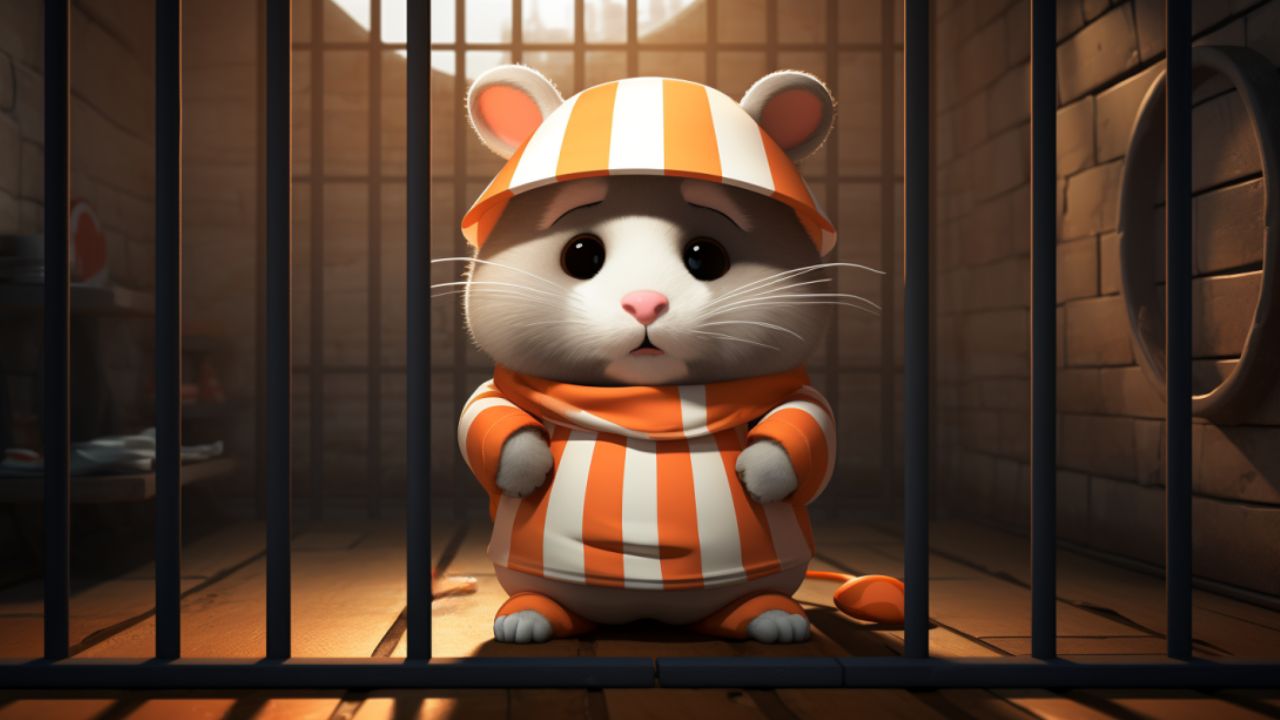
Hamsters are undeniably cute, often capturing our attention with their endless wheel runs and cheek-stuffing antics. But, beyond their charming demeanor, these little furballs possess an exceptional talent: they are incredible escape artists. Many a hamster owner has been puzzled and sometimes alarmed to find their pet hamster missing from its cage, only to discover it exploring some corner of the house or happily munching on a found treat. Let’s delve into the reasons behind the hamster’s impressive Houdini acts and their innate drive to wriggle out of the most secure enclosures.
Born to Burrow
In the wild, hamsters are natural burrowers. They dig intricate tunnel systems underground to protect themselves from predators, store food, and rest. This burrowing instinct remains strong in domesticated hamsters. When they sense an opportunity, be it a tiny gap in their cage or a slightly ajar door, they utilize their burrowing skills to squeeze through, driven by the same instinctual urge to explore and create hiding spots.
Keen Senses and Curiosity
Hamsters have incredibly sharp senses, especially their sense of smell. They can detect food from afar, and their inquisitive nature often propels them to investigate any new scent. This combination of curiosity and a heightened sense of smell can sometimes lead them to venture out of their cages, especially if they sense something enticing nearby.
Flexibility and Determination
One might wonder how a hamster manages to escape from a seemingly secure cage. The secret lies in their flexible body structure. Hamsters can squeeze through surprisingly small gaps, thanks to their pliable skeletons. Moreover, their determination shouldn’t be underestimated. If a hamster decides it wants out, it will gnaw at cage bars, push at loose latches, or even climb to find an escape route.
Preventing the Great Escape
For hamster owners, understanding their pet’s escape tendencies is vital. It’s essential to invest in a well-designed, secure cage with no gaps or weak points. Regularly inspecting the cage for wear and tear, ensuring latches are secured, and providing ample stimulation within the cage can also deter escape attempts. Toys, tunnels, and exercise wheels can keep a hamster engaged and less inclined to seek adventure outside its home.
In conclusion, while the escapades of our furry friends might give us a minor heart attack from time to time, it’s crucial to remember that it’s all part of their nature. By understanding their instincts and ensuring they have a safe, stimulating environment, we can minimize their escape attempts and keep them safe and content.
Hamsters Unveiled: A Final Reflection

Hamsters, with their delightful antics and irresistible charm, have secured their place in the hearts of countless pet enthusiasts across the globe. As we’ve journeyed through the fascinating tidbits about these tiny mammals, it’s evident that there’s so much more to them than meets the eye. From their remarkable cheek pouch storage abilities to their status as mini marathon runners, and from their nocturnal lifestyles to their inherent solitary tendencies, hamsters are a treasure trove of surprises.
A Pet Par Excellence
Despite their short lifespans and sometimes mysterious behaviors, hamsters remain a beloved choice for many as pets. Their low-maintenance care, combined with the entertainment and joy they bring into households, makes them perfect companions for both young and old. Their ability to surprise and educate us, as we’ve discovered in the lesser-known facts highlighted, adds another layer to their allure.
Endearing for Generations
Over the years, hamsters have transcended from being just pets to being cultural icons, often featuring in stories, movies, and educational content. Their undying popularity can be attributed to the mix of their captivating personalities, adorable appearances, and the many surprises they offer, some of which we’ve delved into in this article.
In the end, while we may feel that we know these furry friends well, hamsters never cease to amaze, always offering something new to learn and love. As pet owners or simply as admirers, it’s essential to appreciate these creatures in all their complexity and to provide them with the care and understanding they deserve. Here’s to many more years of hamster-filled joy and discoveries!




